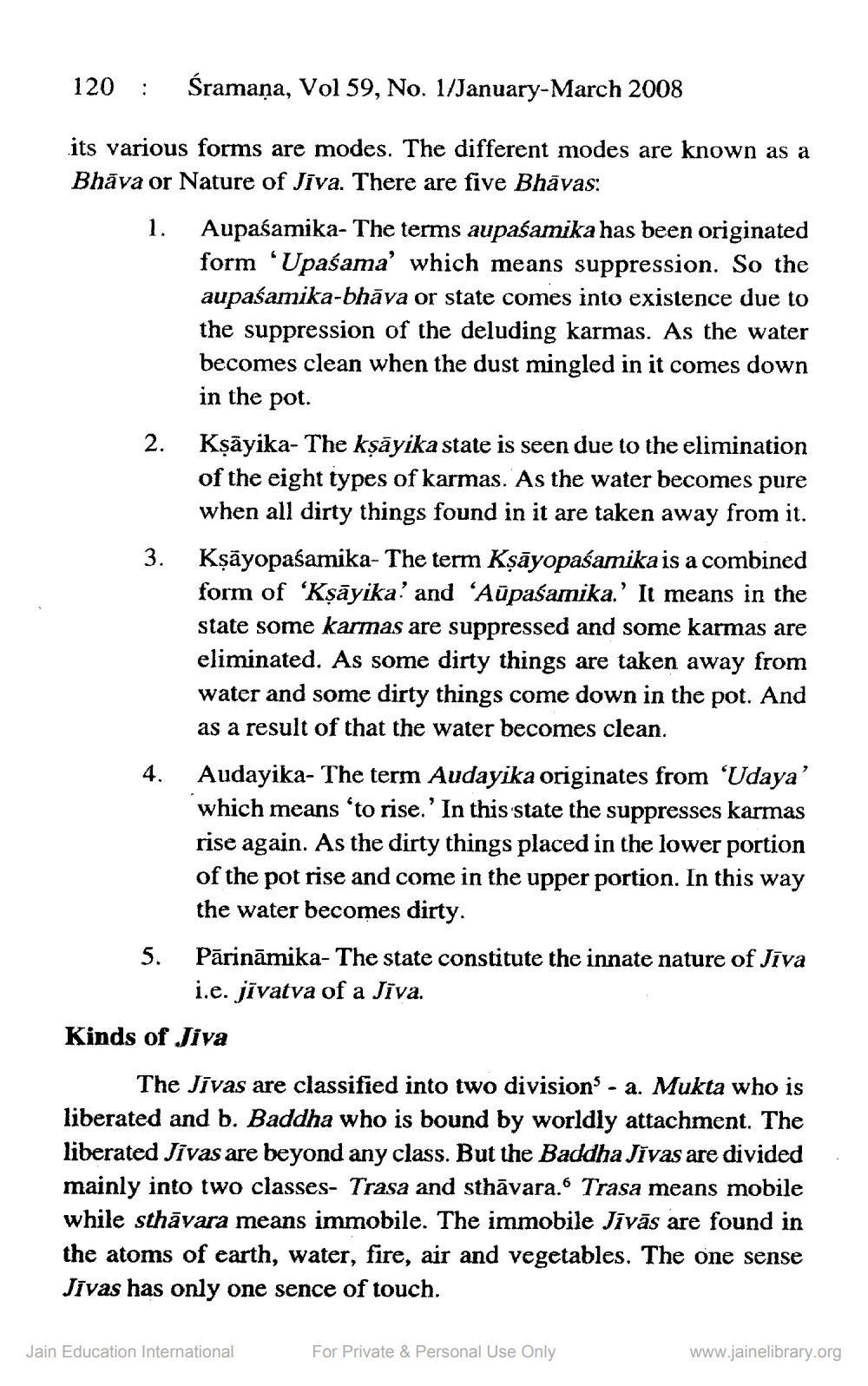________________
Śramaṇa, Vol 59, No. 1/January-March 2008
its various forms are modes. The different modes are known as a Bhāva or Nature of Jīva. There are five Bhāvas:
120
:
1.
2.
3.
4.
5.
Aupaśamika- The terms aupasamika has been originated form 'Upaśama' which means suppression. So the aupaśamika-bhāva or state comes into existence due to the suppression of the deluding karmas. As the water becomes clean when the dust mingled in it comes down in the pot.
Kṣayika- The kṣāyika state is seen due to the elimination of the eight types of karmas. As the water becomes pure when all dirty things found in it are taken away from it.
Kṣayopaśamika- The term Kṣāyopaśamika is a combined form of 'Kṣayika' and 'Aūpaśamika.' It means in the state some karmas are suppressed and some karmas are eliminated. As some dirty things are taken away from water and some dirty things come down in the pot. And as a result of that the water becomes clean.
Audayika- The term Audayika originates from 'Udaya' which means 'to rise.' In this state the suppresses karmas rise again. As the dirty things placed in the lower portion of the pot rise and come in the upper portion. In this way the water becomes dirty.
Pārināmika- The state constitute the innate nature of Jīva i.e. jīvatva of a Jīva.
Kinds of Jiva
The Jīvas are classified into two division3 - a. Mukta who is liberated and b. Baddha who is bound by worldly attachment. The liberated Jīvas are beyond any class. But the Baddha Jīvas are divided mainly into two classes- Trasa and sthāvara. Trasa means mobile while sthāvara means immobile. The immobile Jīvās are found in the atoms of earth, water, fire, air and vegetables. The one sense Jīvas has only one sence of touch.
Jain Education International
For Private & Personal Use Only
www.jainelibrary.org




